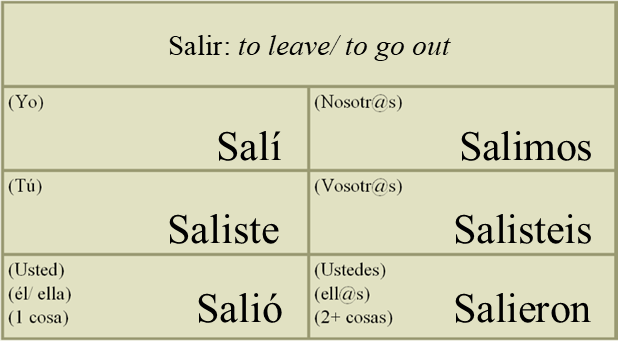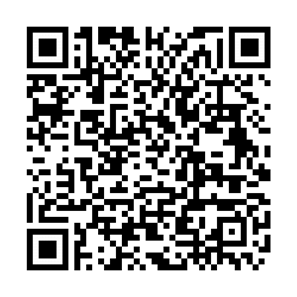9.4: The Preterite
- Page ID
- 44595
Los verbos regulares
El pretérito is used to discuss events in the past that were:
· one-time occurrences
· interrupting actions
· actions that happened at a specific moment in time
· actions that occurred during a specific time period that is now over
There are no stem-changers for –AR and –ER verbs in el pretérito (we will cover what happens with –IR stem-changers very soon).
There are also many irregular verbs in the preterite, which will be covered very soon as well.




Salí de mi zona de confort y lo logré.

Viajó a las montañas.
Tomó dos semanas de vacaciones.
Regresó ayer.
Actividad 8
Foundations. Discuss the following questions about things you have done in the past with a partner. Be prepared to discuss as a class.


1. ¿Cuántos libros de texto compraste para las clases este semestre/ trimestre?


2. ¿Qué comiste esta mañana?


3. ¿Saliste con amigos el fin de semana pasado?
Actividad 9
Rellenar el espacio. Using el pretérito, fill in the blank with the appropriate form of one of the verbs in the word bank (there are more words than you need). Then give the English equivalent.

1. Alberto y Julian ________ dos millas ayer.
________
2. Esta mañana, yo ________ jugo de naranja después de cepillarme los dientes. Fue horrible.
________
3. La semana pasada, mi familia y yo ________ karaoke hasta las tres de la mañana.
________
4. ¿Y tú? ¿Cuándo fue la última vez que ________ tu carro?
________
5. Hace un año, mi padre ________ un carro nuevo.
________
Actividad 10
Preguntas personales. Using el pretérito, respond to the following questions. Be prepared to discuss with a partner and as a class. Audio Video
1. ¿Desayunaste esta mañana?
2. ¿Corriste ayer?
3. ¿Hablaste con tu mamá la semana pasada?
4. ¿Nadaste en un lago el verano pasado?
5. ¿Compraste un carro el año pasado?
Actividad 11
¡A conversar! Use the following questions as a conversation guide with a partner, making sure to focus on using the preterite tense in your responses. Audio Video
1. ¿Cuándo fue la última vez que caminaste en un parque municipal? ¿Cuál fue? ¿Con quién(es) estuviste?
2. ¿Cuándo fue la última vez que escribiste un trabajo para una clase? ¿Para qué clase fue? ¿Cuál fue el tema? ¿Sacaste una buena nota?
3. ¿Cuándo fue la última vez que cocinaste? ¿Qué cocinaste? ¿Salió bien o mal? ¿Compartiste la comida con alguien—quién(es)?
4. ¿Cuándo fue la última vez que celebraste una ocasión especial? ¿Cuál fue la ocasión? ¿Que hiciste para celebrar?


Actividad 12
Una entrevista. Use the preterite to create questions to ask your instructor questions about their past. You might also consider using these questions to get to know a native speaker outside of class. Write your questions in the space provided below, use them to interview your instructor, and make note of their responses.
1. ________
2. ________
3. ________
4. ________
5. ________
Actividad 13
Un cortometraje. Do an Internet search for a cortometraje (short film) in Spanish. Turn off the sound and watch it once. Use the preterite to make note of as many events that you witness in the film as possible. Watch it again and add more sentences as you are able. Lastly, watch it a third time with the sound on and enjoy!
Actividad 14
¿Cierto o falso? Read the statements about world events and celebrities, writing Cierto if you think it is true, or Falso if you think it is false underneath the statement. Scan the QR code to check your answer, fixing any incorrect answers.
1. George H. W. Bush fue presidente por 8 años.

2. Shakira nació en Medellín, Colombia.

3. Natalia LaFourcade lanzó su álbum Musas en el año 2017.

4. México cedió mucho territorio a los EEUU después de la guerra de México—Estados Unidos.

5. Antonio Banderas creció en Argetina.



